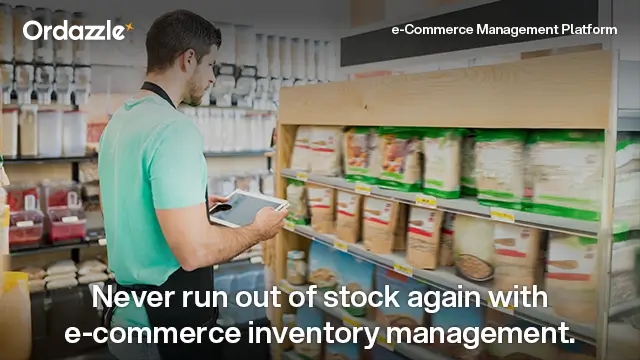Using a Centralised Channel Management System to Improve E-commerce Cross-Channel Alignment

New-age e-commerce brands have their work cut out for them. No longer is it enough to just launch your brand’s website or app, or set up a store on a marketplace. Now that the competition is so intense, you need to use e-commerce cross-channel strategies to stand out. From reach to convenience, an e-commerce cross-channel strategy offers many advantages. But it can be challenging to manage the different sales channels on your own. Not to worry, though. Using a channel management system can help you successfully implement this strategy.
Understanding your marketplaces and webstores
This is the first step for any kind of growth in your business. You need to understand how the different sales channels work. This is especially true if you want to implement e-commerce cross channel strategies.
The first step is to analyse where your current systems and processes are.
Only if you know the ins and outs of the system will you be able to optimise the order fulfilment process and provide a seamless customer experience. Some of the key features that you should always consider are as follows.
- Target Audience
Knowing your target audience is crucial to creating a successful online marketplace or web store. Identify your ideal customer and tailor your marketing and sales strategies to their needs and preferences.
- User Experience
Providing a seamless and enjoyable user experience–from browsing products to payments to post-purchase tracking and support–is key to attracting and retaining customers. To that end, you must make sure your website is easy to navigate, visually appealing and optimised for mobile devices.
- Competition
If you want your brand to stand out, then you have to match or beat what the other competitors are offering. Conducting detailed research on your competition will help you understand their strengths and weaknesses, pricing strategies, and how they serve their customers.
Next, you should analyse customer behaviour and preferences to identify potential areas of improvement.
There are two things that you should consider here—market research and user preference data.
You need to find out what the key benchmarks are in the segment(s) and market(s) you operate in. You need to continuously improve and innovate to make sure your products are above the market average. Apart from that, you can also use analytics tools to track key metrics such as traffic, conversions, and customer behaviour.
This data will help you optimise your marketing and sales strategies and identify opportunities for growth.
The final step is to look for solutions.
At this stage, you are armed with two pieces of information — where you’re at and where you need to be. The last step is to form a plan of how you can reach from the first stage to the latter one.
Which parts of the process do you need to look at first? How can you reduce the turnaround time? How can you optimise the order fulfilment process?
The answers to these questions will help you develop a robust, yet flexible cross-channel selling strategy and execution plan that can be adapted to meet evolving market and customer needs.
Implementing a centralised channel management system
A centralised e-commerce channel management system consolidates the entire order fulfilment process into a single platform. From processing orders to updating inventory, from scheduling delivery to integrating different sales channels, it can handle it all. If you’re large brand operating in multiple regions and with a presence on multiple sales channels, then such a solution can offer many important benefits such as increasing process efficiencies and lowering costs, to name a few. A centralised channel management system can help big-ticket sellers manage and scale their multi-channel operations by providing a single platform to streamline and automate various processes across multiple sales channels.
A high-quality, integrated channel management system should ideally have the following elements and features to offer maximum efficiency in managing multi-channel e-commerce operations:
- Inventory management: Centralised channel management systems enable brands to track inventory across multiple channels, preventing stockouts and overselling. They also allow for quick, real-time inventory updates and ensure accurate product availability information across all channels. Learn more about centralised inventory management.
- Order management: A centralised platform consolidates orders from multiple channels, allowing brands to efficiently process, fulfil, and track orders. This reduces the likelihood of errors and ensures a consistent customer experience. Discover how to improve your E-commerce order management.
- Channel integration: The system integrates with various sales channels, including online marketplaces, social media platforms, and brick-and-mortar stores. This allows brands to manage all their channels from a single dashboard, saving time and effort.
- Product information management: A centralised system enables brands to maintain consistent product information across multiple channels, ensuring customers receive accurate and up-to-date product details.
- Pricing and promotions: Centralised management allows brands to coordinate pricing strategies and promotions across channels, helping maintain a consistent brand image and avoid conflicts.
- Data analytics and reporting: These systems collect and consolidate data from multiple channels, enabling brands to analyse their sales performance, customer behaviour, and market trends. This helps them make data-driven decisions to optimise their operations and improve profitability.
- Customer experience: By streamlining processes and maintaining consistent product information, a centralised system enhances the overall customer experience, increasing customer satisfaction and loyalty.
- Scalability: As a brand grows, a centralised, cloud-based e-commerce channel management system can easily accommodate additional channels and scale to handle increased volume. This enables brands to expand their market presence and reach new customers without significant operational challenges.
Let’s take a closer look at some of the key benefits of a multi-channel inventory management system.
Benefits of an end-to-end channel management system
A centralized e-commerce channel management system can help large brands manage and scale their multi-channel operations in several ways:
1. Streamlining Operations:
With a centralised e-commerce channel management system, brands can manage all their e-commerce channels from a single platform. This allows them to streamline their operations by simplifying the management of inventory, orders, and product information across multiple channels.
2. Increased Efficiency:
Centralising e-commerce channel management can lead to greater efficiency as it eliminates the need for manual data entry and reduces the risk of errors. This can improve overall productivity and free up time for employees to focus on other important tasks.
3. Consistent Branding:
A centralised e-commerce channel management system can ensure that all e-commerce channels are aligned with the brand’s image and messaging. This can help to create a consistent customer experience across all channels and improve brand recognition.
4. Improved Customer Experience:
By centralising e-commerce channel management, brands can improve the customer experience by providing accurate product information and inventory availability across all channels. This can help to reduce the risk of customers receiving conflicting information and ultimately lead to a standardised customer experience that drives greater customer satisfaction.
5. Data Analytics:
A centralised e-commerce channel management system can also provide brands with valuable data insights. By tracking sales, inventory, and customer behaviour across multiple channels, brands can gain a better understanding of their customers’ needs and preferences and adjust their strategies accordingly.
Using a channel management system like Ordazzle can help you implement an e-commerce cross channel strategy. By automating your tasks, it will enable you to handle a greater volume of orders and more traffic, while ensuring timely, error-free order fulfilments to customers across all channels and regions.
Get in touch to learn more about Ordazzle and its multi-channel management system for e-commerce.


